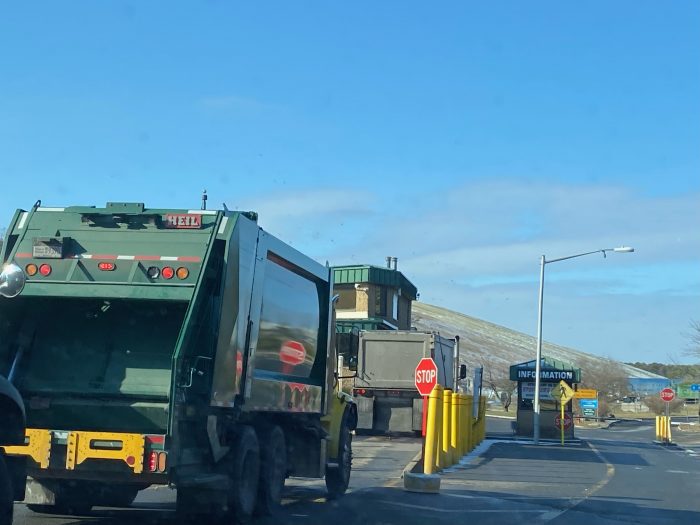Balancing act between closure and extension, the Brookhaven landfill
By Samantha Rutt
The Town of Brookhaven landfill, a towering 192-acre presence on Yaphank’s landscape, is set for a partial closure this year, but its complete demise might not be as imminent as planned.
The initial plan, set in motion years ago, aimed for a complete closure of the landfill by 2024. While construction and demolition debris disposal has been earmarked to cease by the end of 2024, the facility could remain open until 2027 or 2028 to accept incinerator ash, sparking debates about environmental impact and responsible waste management.
A 2021 Town of Brookhaven exploratory report stated, “The Brookhaven landfill is anticipated to reach the capacity limits of its DEC permit by December 2024, creating a challenge for residents and Brookhaven Town regarding the future disposal of MSW [municipal solid waste], ash and construction and demolition debris.”
However, new Town Supervisor Dan Panico (R) has thrown a wrench in that timeline, seeking a permit extension allowing the facility to accept ash from Covanta’s Westbury waste-to-energy plant until 2027 or 2028.
“We will cease taking construction and demolition debris at the end of 2024, and we will continue taking ash, not only from the Town of Brookhaven Covanta but from Islip, Smithtown and Huntington as it is a regional ash fill,” Panico said in an interview with Newsday. “That will probably go through 2027 and cease in the first month of 2028.”
The town would need to seek an extension of its state-issued permit when it expires in July 2026. This decision stems from the lack of alternative disposal solutions for the roughly 340,000 tons of ash generated annually by Covanta, which serves much of Suffolk County. The landfill stands as Brookhaven’s second-biggest source of income after property taxes, expected to generate $55 million in 2024, implying sizable financial implications for when the property closes.
“It is not necessarily an extension because the waste-to-energy facilities are a reality and a necessity on Long Island,” Panico said in an interview.
The news has divided the community. Proponents of the extension argue it buys valuable time for exploring alternatives. Opponents, however, express concerns about potential environmental repercussions.
Locals have gathered together in efforts against the landfill, raising their concerns. Currently, the town is underway with a state-ordered assessment by the Department of Environmental Conservation of a toxic plume emanating from the landfill.
In North Bellport and areas surrounding the landfill, community members have joined together to create the Brookhaven Landfill Action and Remediation Group. This group has committed itself to finding sustainable solutions for the disposal of Long Island’s waste.
“The time is now. The time was yesterday,” Monique Fitzgerald, Brookhaven Landfill Action and Remediation Group co-founder, said on the group’s Facebook page. “The time was 50 years ago. This is not to wait. You’re talking about this, which is going to take two years. We can’t keep pushing this down the road. If we have a moment of intervention, this is the time to act.”
In densely populated areas like Long Island, with limited landfill space, communities are often left to grapple with balancing environmental concerns and the practicalities of managing massive amounts of waste.
The Town Board is currently evaluating the permit extension request, considering public input and environmental assessments. Environmental groups like the Long Island Pine Barrens Society have voiced their opposition, urging the board to explore alternatives like recycling, composting and waste-to-fuel technologies.
The Brookhaven landfill saga stands as a microcosm of Long Island’s larger waste management challenges. As the closure deadline looms, the community faces a crucial decision: Extend the landfill’s life for a temporary fix or invest in long-term, sustainable solutions. The next few years will be critical in shaping the future of waste management in the region and potentially impacting the environment and communities for years to come.







